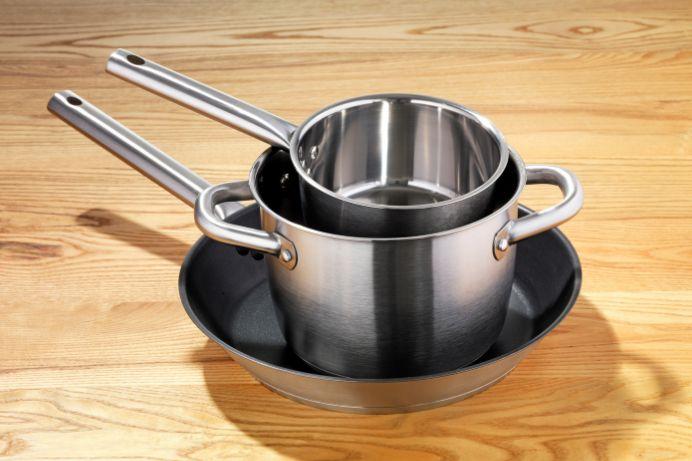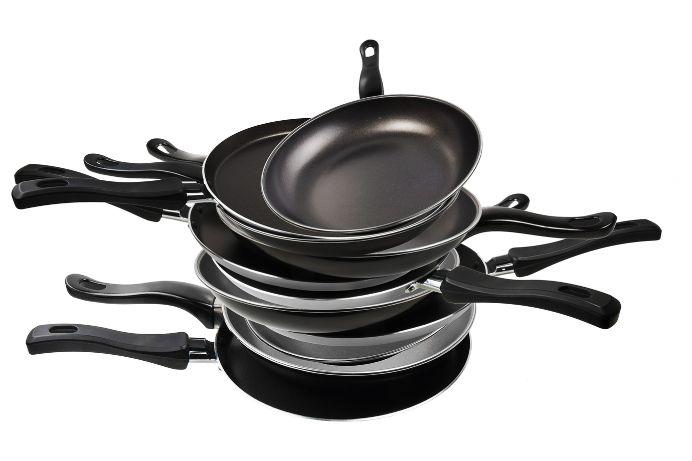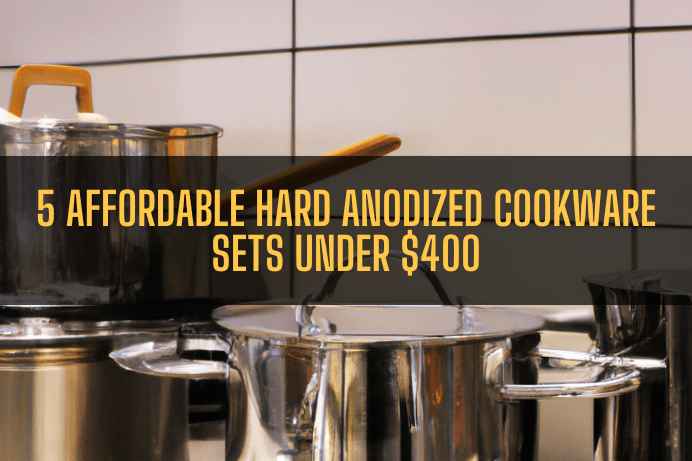Is Hard-Anodized cookware safer than Stainless Steel for Health?
Stainless steel and hard-anodized aluminum stand out as highly favored cookware choices. They both exhibit rapid and uniform heat distribution, can handle a wide range of ingredients, and boast impressive longevity. This analysis will delve into the disparities between stainless steel and hard-anodized aluminum cookware, exploring aspects such as performance, durability, maintenance, heat conductivity, and various other attributes.
A Comprehensive Overview of Hard Anodized Cookware
Hard-anodized aluminum, a stalwart among cookware materials, undergoes an electromagnetic process that imparts exceptional strength and durability to the metal. This enhanced resilience is a product of the metal’s hardening during the anodization process. In terms of heat distribution, this cookware excels due to aluminum’s inherent conductive properties, ensuring even heating throughout. Furthermore, the non-stick coating renders cleaning a breeze.
Appearance
Most hard-anodized aluminum cookware boasts a dark gray exterior and a black or charcoal cooking surface, a byproduct of the anodizing process. Though its appearance is far from displeasing, those with a penchant for the lustre of stainless steel or vibrant hues may find their choices somewhat limited.
A Detailed Analysis of Stainless Steel Cookware

Stainless steel cookware, a veritable kitchen staple, boasts an appealing appearance, unparalleled durability, and a versatile range of culinary applications. Its culinary prowess encompasses searing, browning, braising, broiling, sautéing, and much more.
Stainless steel cookware comes in various forms, including fully-clad and impact-bonded variations. Fully clad cookware entails the bonding of multiple metal layers, forming a “ply” which denotes the number of bonded layers.
Appearance
Typically, stainless steel cookware showcases a glossy, polished exterior complemented by a smooth, silvery interior. Its elegant design allows for seamless cooking and elegant food presentation.
A Comparative Analysis: Stainless Steel and Hard-Anodized Cookware
Let us now delve into a comprehensive comparison of Stainless Steel and Hard-Anodized Aluminum, evaluating their attributes from diverse perspectives.

1. Heat Conductivity of Stainless Steel and Hard Anodized Cookware
The heat conductivity of aluminum is widely known, and this trait extends to its anodized form as well. Thanks to its exceptional heat conductivity, food cooks evenly in a shorter span of time. In contrast, stainless steel’s heat distribution is not as uniform, leading to hot spots that cause uneven cooking and searing. However, modern stainless steel cookware often incorporates copper or aluminum cores at the base, enhancing overall heat conductivity.
2. Non-Stick Coating
Anodized aluminum cookware undergoes an electrochemical process that results in a layer of aluminum oxide on the surface. This process imparts a dark gray hue to the pots and pans and grants them a non-stick characteristic. The stick-resistant coating ensures that food rarely adheres to the cookware’s surface, simplifying the cooking process. In contrast, stainless steel cookware lacks a non-stick coating, offering no such stick-free convenience.
3. Durability:
The additional coating of the anodized cookware reinforces the base metal, endowing the pots and pans with enhanced sturdiness and durability. Hard-anodized aluminum cookware stands out as one of the most robust options available today, boasting twice the strength of its stainless steel counterparts. However, there is a caveat—the anodized coating might wear off over time, potentially exposing the underlying aluminum metal. In contrast, stainless steel cookware poses no such risk of toxicity. Moreover, alloyed cookware displays remarkable resistance to rust and corrosion.
4. Maintenance
Hard-anodized cookware is not dishwasher-friendly, as the coating may discolor and become damaged. It necessitates handwashing, albeit with caution against using metal scrubbers that could harm the non-stick surface. Stainless steel cookware, on the other hand, handles daily wear and tear with ease and is safe to use in dishwashers. Furthermore, the metal scrubbers pose no threat of eroding the cookware’s surface. Additionally, stainless steel cookware is oven and broiler safe.
Conclusion
Both aluminum and stainless steel cookware boast their own merits and drawbacks, making them both excellent choices for culinary enthusiasts. If your budget permits, consider acquiring both types to discern which suits your preferences best. Embrace the opportunity to expand your cookware collection with the knowledge gained from firsthand experience.
In this reimagined discourse, we’ve explored the intricate facets of hard-anodized cookware and stainless steel cookware, providing a rich understanding of their characteristics and applications. May this newfound knowledge guide you towards culinary excellence in your kitchen endeavors.
if you enjoy this article and find it helpful explore the best hard anodized cookware sets.




